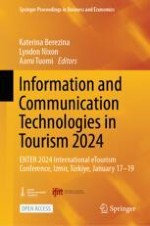1 Introduction
2 Literature Review
2.1 Virtual Tour Experience: Influences of Sensory Stimuli and Narratives
2.2 Embodied Cognition in Dark Tourism
2.3 Art Creation as a Cognitive and Affective Effort
3 Research Methodology
3.1 Research Design
3.2 Experimental Procedure and Data Analysis
4 Findings


4.1 Virtual Tour Reflections Among Individuals
-
Group 1: No audio and No narrative
-
Group 2: Narratives and No Audio
-
Group 3: Audio and No Narratives
-
Group 4: Audio and Narratives
4.2 Artwork Creation and Appreciation
-
Group 1: No audio and No narrative
-
Group 2: Narratives and No Audio
-
Group 3: Audio and No Narratives
-
Group 4: Audio and Narratives
